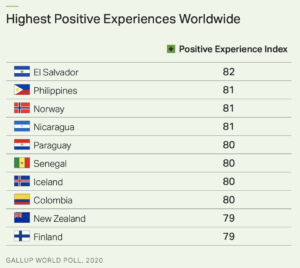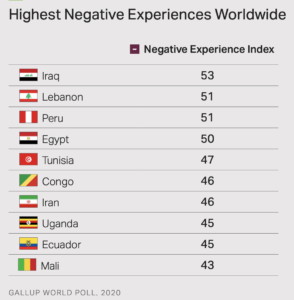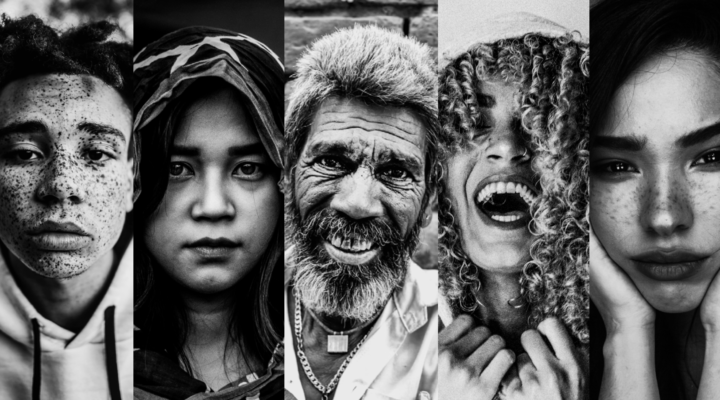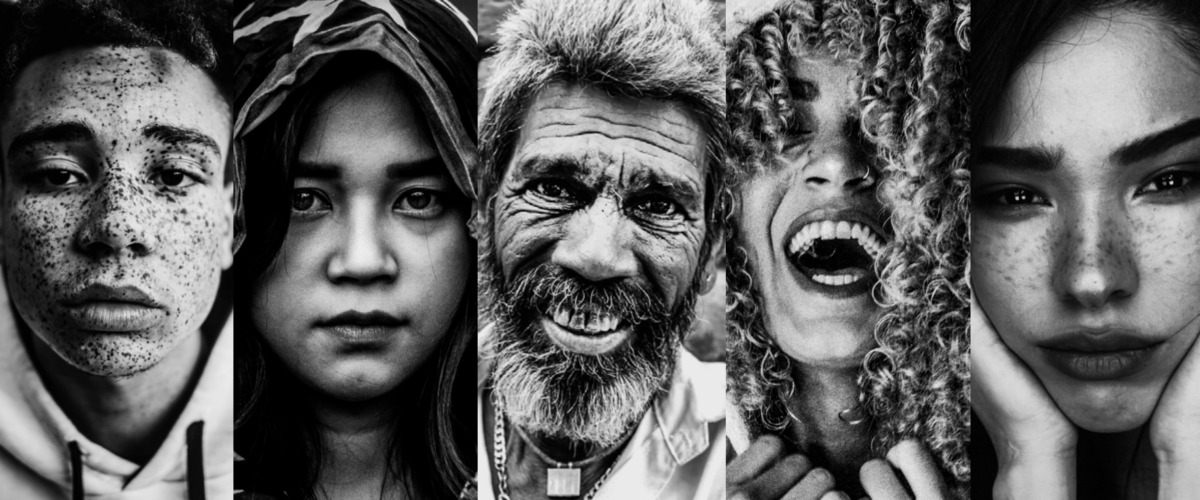New research shows that 2020 gave much of the world’s population a whole lot more to frown about, and not only because of the COVID-19 pandemic.
The 2021 Gallup “Global Emotions” survey, which tracks negative and positive experiences, reports that the percentage of people worldwide who said they had something to smile or laugh about dropped from 75% in 2019 to 70% last year. Gallup said it was the lowest measure for that question ever recorded in the 15 years of the survey.
“In 12 countries and areas that span multiple continents and income groups, there were double-digit declines in the percentage of people who reported smiling or laughing a lot the previous day, and scores moved in a negative direction in most of the countries,” the survey found.
The United States, Canada and much of South America were not among that group but did experience declines in smiling and laughter of up to 9 points.
 The positive and negative emotions indexes are based on interviews with close to 160,000 adults in 116 nations in 2020 and early 2021.
The positive and negative emotions indexes are based on interviews with close to 160,000 adults in 116 nations in 2020 and early 2021.
To gauge negative feelings, respondents were asked if, on the day before their interviews, they had experienced physical pain, worry, sadness, stress and anger. To measure positive experiences, participants were asked if they were treated with respect, smiled or laughed, learned an interesting task and were well rested the day before the survey.
Overall, researchers found that the pandemic was not getting all the blame for the rise in negativity.
“While 2020 set a record for negative emotions, the trend actually started almost 10 years ago,” according to Jon Clifton, global managing partner for Gallup. He cited political and economic turmoil as providing a backdrop for increases in negative emotions, including unrest in Lebanon and Greece’s economic challenges.
Clifton added that “four other things may be contributing to this global rise in negative emotions: increasing global hunger, a lack of freedom, rising corruption and income inequality.”
But the news wasn’t all bad, Gallup said. The survey’s positive experience index uncovered a depth of human resiliency even in “one of the worst years ever.”
Some 72% of participants worldwide reported being well-rested while another 70% had smiled or laughed. Almost nine out of 10 said they had been treated with respect the day before being interviewed.
 “Providing evidence of people’s resiliency, the results on most of these items changed very little from the previous year. People were just as likely to say that, during a lot of the preceding day, they experienced enjoyment, felt treated with respect and learned something interesting, with the percentage who said they felt well-rested even increasing one point.”
“Providing evidence of people’s resiliency, the results on most of these items changed very little from the previous year. People were just as likely to say that, during a lot of the preceding day, they experienced enjoyment, felt treated with respect and learned something interesting, with the percentage who said they felt well-rested even increasing one point.”
Gallup said it also added a question about “calmness” to the survey. “This initial test revealed that 72% of the world’s adults reported feeling a lot of calmness the previous day. However, experiences of calmness varied extensively across the world, ranging from a low of 34% in Nepal to a high of 93% in Vietnam.” According to a map of global calmness levels provided in the report, Canada also ranked in the upper echelon while the U.S. trailed just below 90%.
But the survey also found there was, no doubt, plenty of misery to go around last year.
“As positive as people were in 2020, the Negative Experience Index shows the world was a sadder, angrier, more worried and more stressed-out place than it has been at any time in the past 15 years,” Gallup said. “Four in 10 adults said they had experienced worry (40%) or stress (40%), and just under three in 10 had experienced physical pain (29%) during a lot of the day before. About one in four or more experienced sadness (27%) or anger (24%).”
Worry and sadness each rose one percentage point, anger rose two points, and stress increased by five points. The percentage of adults worldwide who experienced pain was the only index item that declined — dropping two points to 29% after holding steady for several years at 31%.”
 Nations with the highest negativity index points are located mostly in Africa and the Middle East, with Iraq leading the way at 53 and Mali at 43. Peru (51) and Ecuador (45) were the only nations from the Americas to make that list.
Nations with the highest negativity index points are located mostly in Africa and the Middle East, with Iraq leading the way at 53 and Mali at 43. Peru (51) and Ecuador (45) were the only nations from the Americas to make that list.
Stress was another metric Gallup singled out for analysis in its research, explaining that “2020 was officially the most stressful year in recent history, with a record-high 40% of adults worldwide saying they experienced stress during a lot of the previous day. This five-percentage-point jump from 35% in 2019 represents nearly 190 million more people globally who experienced stress this often. Overall, there were double-digit increases in stress in 21 countries and areas and more than half of countries saw some sort of increase.”
The report shows that the United States experienced up to a 9-point increase in stress levels while Canadians reported a 9-point reduction in stress.
“Worldwide, not everyone was feeling this stress to the same degree,” Gallup explained. “Reported stress ranged from a high of 66% in Peru — which represents a new high for the country — to a low of 13% in Kyrgyzstan, where stress levels have historically been low and stayed low in 2020.”
Related articles:
Barna compares pre-pandemic anxiety to today, and you can imagine the results
Instead of sending out more anxiety, here’s a way to send out love | Opinion by Kelly Deutsch
Want to find rest from the weariness of COVID-19? Breathe | Opinion by Jon Singletary


